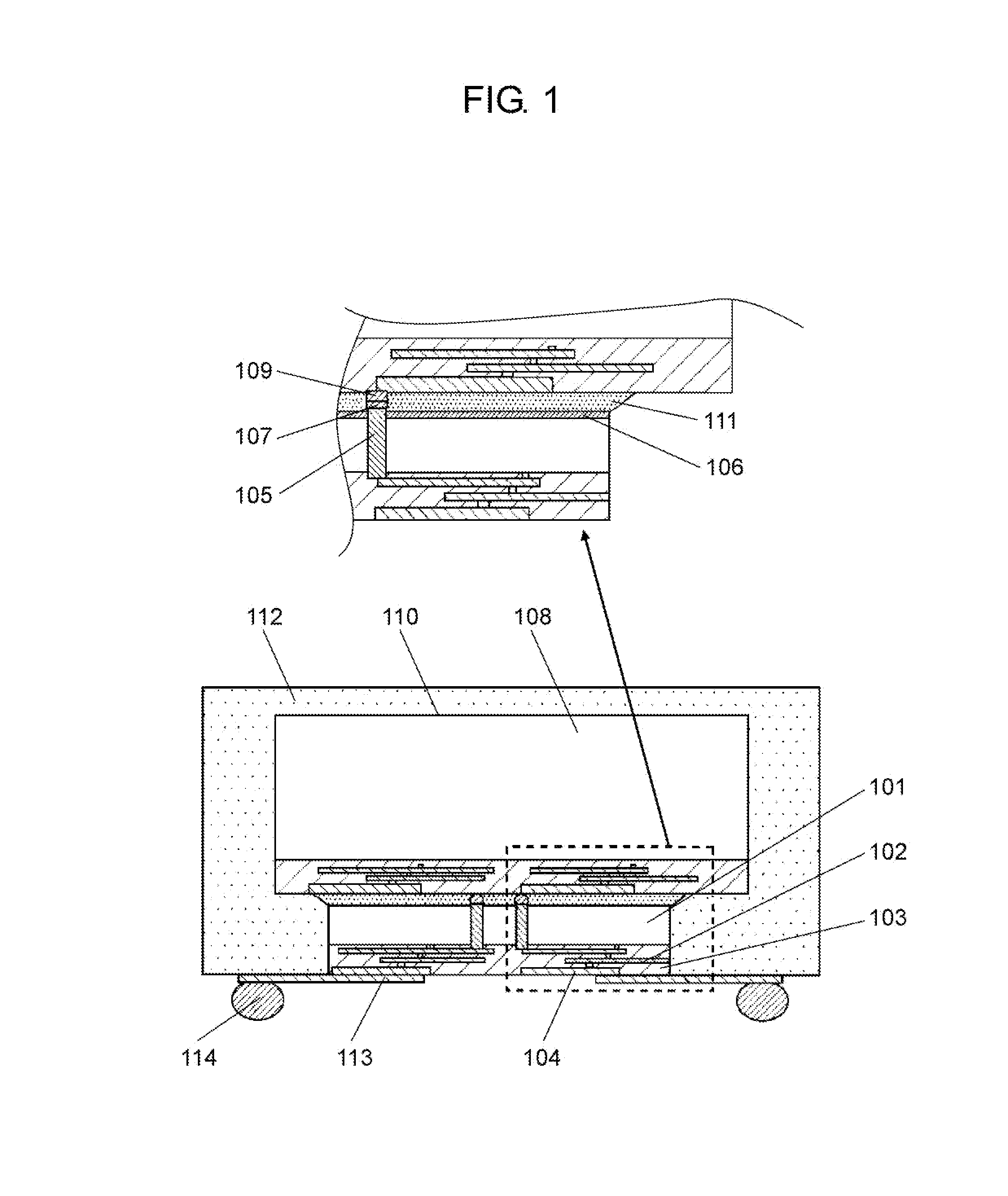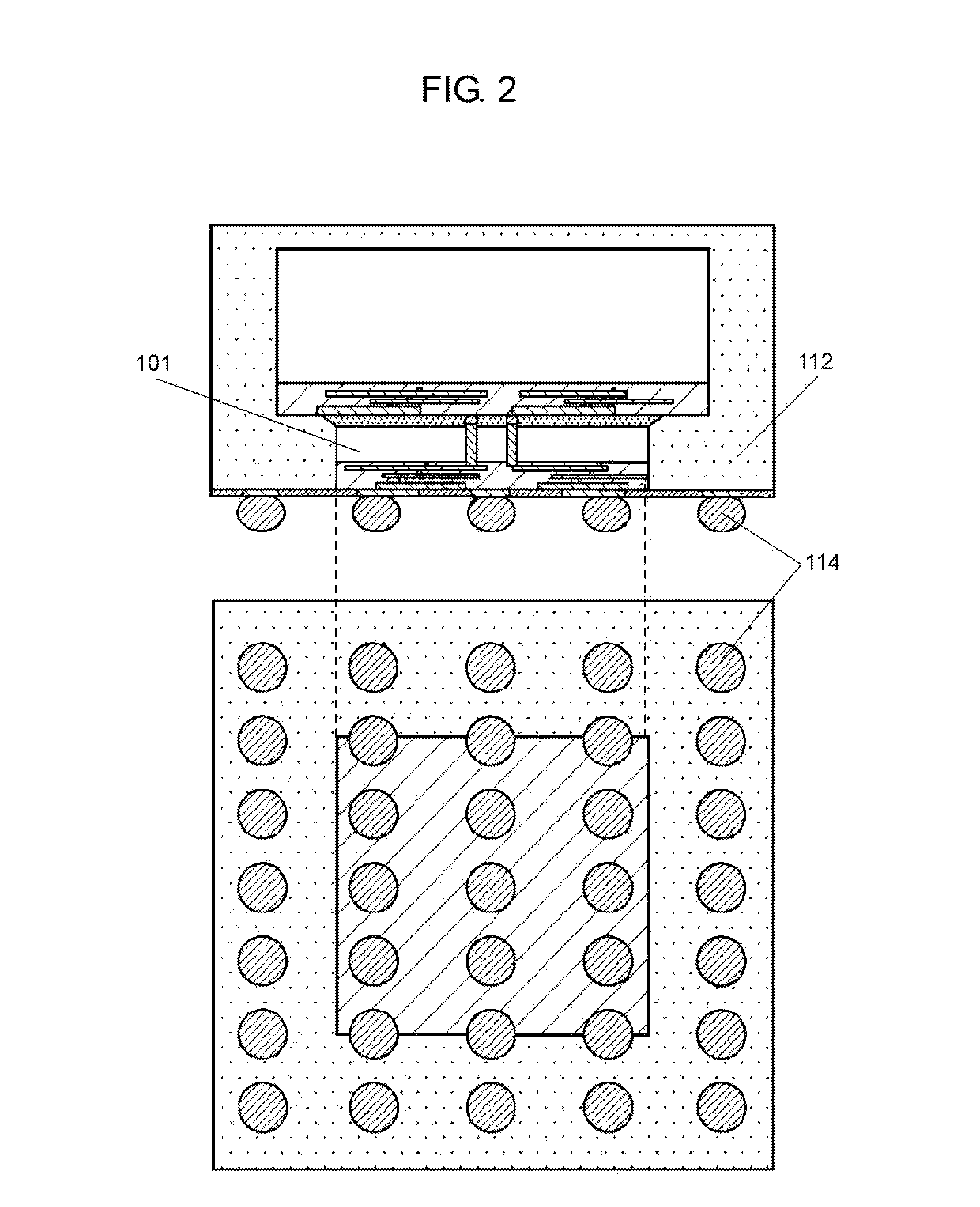Semiconductor device and method for manufacturing same
- Summary
- Abstract
- Description
- Claims
- Application Information
AI Technical Summary
Benefits of technology
Problems solved by technology
Method used
Image
Examples
first exemplary embodiment
Semiconductor Device
[0065]FIG. 1 is a sectional view showing a semiconductor device in accordance with the first exemplary embodiment.
[0066]As shown in FIG. 1, first semiconductor chip 101 that is made of silicon, for example, and has a main surface of 6 mm□ is prepared. An element (not shown) such as a transistor and distribution layer 104 are formed on the main surface (front surface side) of first semiconductor chip 101. Distribution layer 104 includes wiring 102 electrically connected to the element and inter-layer insulating film 103 covering the element. First semiconductor chip 101 includes silicon penetration electrodes 105 that are connected to a part of wiring 102 and have a diameter of 5 μm and a depth of 50 μm, for example.
[0067]First semiconductor chip 101 is thinned to a thickness of 50 μm or less, for example, by polishing the silicon on the rear surface side. Conductive surfaces of the bottoms of silicon penetration electrodes 105 are exposed on the rear surface of f...
first modified example of first exemplary embodiment
[0086]As shown in FIG. 5, the rear surface and side surfaces of second semiconductor chip 108 may be exposed. This structure can be easily achieved by a process of polishing the rear surface after the sealing, or a process of protecting the rear surface with a sheet before the sealing, and peeling the sheet after the sealing. Also in FIG. 1 to FIG. 4, the rear surface of second semiconductor chip 108 may be exposed.
[0087]In such a structure, heat can be directly radiated to the periphery (in air) through the chip rear surface. Furthermore, a radiator plate, a heat sink, or a fin can be bonded to the chip rear surface, so that a large radiation path can be secured. As a result, a semiconductor device of high radiation property can be provided.
second modified example of first exemplary embodiment
[0088]As shown in FIG. 6, two facing side surfaces of first semiconductor chip 101 may be exposed from first resin 112. In this case, two facing side surfaces other than the exposed two facing side surfaces are covered with first resin 112. In FIG. 6, the rear surface of second semiconductor chip 108 is covered with first resin 112, and side surfaces of second semiconductor chip 108 are exposed. However, the rear surface of second semiconductor chip 108 may be exposed (not shown) as in the first modified example. The side surfaces of second semiconductor chip 108 may be covered with first resin 112 (not shown).
PUM
 Login to View More
Login to View More Abstract
Description
Claims
Application Information
 Login to View More
Login to View More - R&D
- Intellectual Property
- Life Sciences
- Materials
- Tech Scout
- Unparalleled Data Quality
- Higher Quality Content
- 60% Fewer Hallucinations
Browse by: Latest US Patents, China's latest patents, Technical Efficacy Thesaurus, Application Domain, Technology Topic, Popular Technical Reports.
© 2025 PatSnap. All rights reserved.Legal|Privacy policy|Modern Slavery Act Transparency Statement|Sitemap|About US| Contact US: help@patsnap.com



